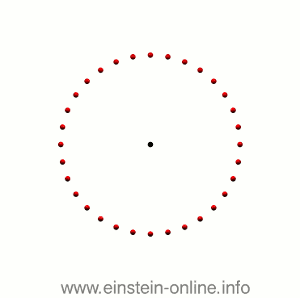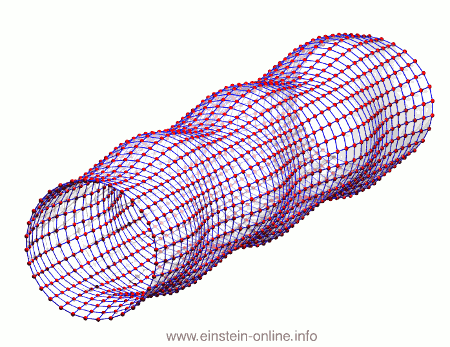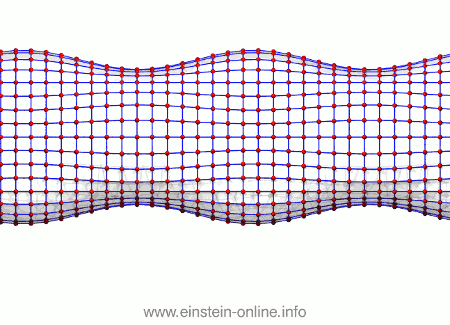Quote from: area51drone on February 17, 2016, 07:37:38 PMFrom what we understand about compressibility and the pressure-density relationship of matter under extreme circumstances we don't know of anything that can stand up to the extreme gravity inside. It should all be very nearly pointlike. Please don't get me wrong, that's by no means the whole story, surely there are quantum effects that are important at the singularity. The current thinking is that these will smooth out the singularity to prevent an infinity there. Many people also have other ideas about what might be in there from string theory also. But again, the horizon and external geometries reduce to GR within the observational error margins, as they must, for all these models.
I've got more to say but I need to go do something so I'll just keep the conversation flowing with this.. I don't dislike GR, I'm simply asking is there any physical evidence that there can't be a body inside the event horizon?
Quote from: area51drone on February 17, 2016, 07:37:38 PMYou can get it from the Hawking radiation and gravitational waves will tell you a lot about whether or not there's a structure in there too given how black holes merge and ringdown. But there are other physical reasons why the mass has to be very localised to a small region near the center which is to do with our understanding of the properties of matter.
You say no, but only give a model, which GR is, even though at least from all past experiments it has been proven to be true. But it's still a model. I'm asking you, is there anything physical, an experiment that has been done, might be able to be done (even in theory), or an observation of a distant body that proves beyond a shadow of a doubt that the mass is not a singular point (or ring, or whatever).
Quote from: area51drone on February 17, 2016, 07:37:38 PMThe least speculative option is GR given how well the other predictions all stand up to scrutiny. And thats my argument, given the success of GR anything that comes afterward has to reduce to GR in the appropriate limit, just like GR reproduces Newtonian mechanics in the appropriate limit. So it may be there's a spacetime crystal or phase transition to another universe inside a black hole or some other exotic thing. Observers are limited to what they can measure about black holes so we would have to hope that subtle distinctions exist between these options to distinguish the new theories predictions from vanilla GR, ie in the gravitational wave signature or some details of the black hole shadow, etc. These are quantities which are now on the cusp of being tested. Exciting times!
How can one say that GR is correct beyond the point we can see when there is no data to prove it? Again, I'm not trying to ask this in a gotcha kind of way. I just don't understand how mass/energy can fall to a single point in space.
Quote from: area51drone on February 17, 2016, 07:37:38 PMWhy should adding mass to a black hole NOT grow the event horizon? More mass means more curvature which means it's more difficult to escape the black hole at larger radii. I don't understand your objection to this point.
I'm not saying I can't understand why according to GR, I certainly could if I just accept that it is true everywhere (like you do), I just find it physically hard to believe because a singularity that is infinite seems like adding infinity+10 more stars shouldn't grow the event horizon, yet apparently it does. Do you see what I'm saying?
radius of event horizon = 2GM/c^2 where G is the gravitational constant, c the speed of light and M mass of the black hole. As M goes up, the radius of the event horizon goes up too.
Edited to add: I re-read your post and think you are mistaking mass for mass-density. The mass of the black hole is finite so M has a well-defined finite value. That mass must all be in a very small (point-like) region at the center of the black hole. This since mass divided by volume gives mass density if that mass is in an extremely small volume the mass density is very high. That mass density is what is finite, not the mass itself at r=0. Hope that helps.








